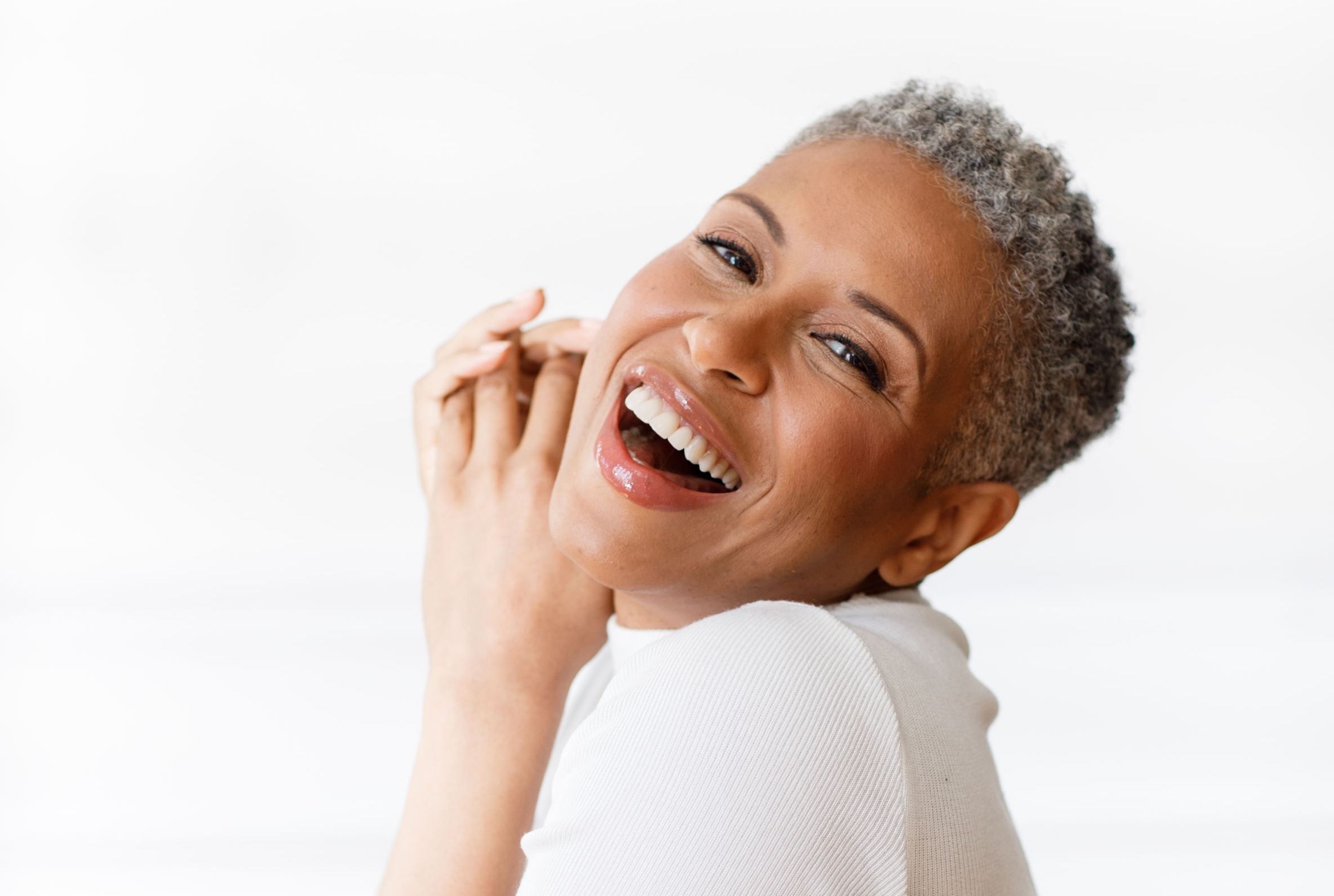Isn’t it ironic that as the hair on our scalp thins during menopause, we start to notice more hair growing in places where it’s absolutely not wanted – on our chins, on the sides of the face, even on our nipples! Read on to find out why this happens and the best way to remove any unwelcome growth!
Find what you need quickly
Why do you get more facial hair during menopause?
Aesthetic medical doctor Dr. Sophie Shotter explains: “As we approach menopause our estrogen and progesterone levels drop quicker than our testosterone levels. Some people end up with androgen dominance, which can cause unwanted hair growth.”
You may also notice you have less underarm and pubic hair. This hair begins to grow in puberty, but lower estrogen levels during menopause cause it to thin.
What is the best way to remove facial hair?
This depends on the kind of hair you want to remove. There are two common types of facial hair growth during menopause: peachy-colored fuzz and more coarse, dark hairs.
Stray dark hairs
Dr. Sophie says: “If it’s the odd stray dark hair, then tweezing it is still the quickest and best way.”
Peach fuzz
This often grows on the face and chin. Facialist and aesthetic practitioner Vaishaly Patel says: “Threading is one of the best options for all skin tones and skin types. Lasers won’t work on fine, light hair and isn’t advisable for darker skin tones.”
Want to try it? “Make sure you see someone who is experienced, as the angle is important. Otherwise, the hairs won’t be removed at the root and can snap off,” says Vaishaly. “Threading can be done all over the face, jawline, and chin area. It depends on the person, but results will usually last for about a month.”
Is dermaplaning recommended for facial hair removal?
This is now one of the most requested treatments in New York. London-based facialist and dermaplaning specialist Tine Hagelquist explains: “Dermaplaning is essentially face-shaving with either a specifically designed device for home use or a surgical-grade scalpel in the steady hand of a qualified practitioner.”
“The blade is scraped over the skin’s surface so as well as removing any peachy hair fuzz you also get a chemical-free form of exfoliation leaving the skin brighter,” she explains. “You’ll also find makeup goes on as smooth as silk afterward, which is why it’s in demand as a pre-event treatment.”
How should you remove hair on your upper lip?
Brow bar founder Vanita Parti says that threading is much better than waxing or other forms of hair removal for the delicate upper lip area: “With threading, the hair won’t grow back bristly – in fact, it will come back finer than before. And if the therapist is experienced it can be pretty quick and not too painful!”
How to deal with ingrown hairs
Waxing specialist Arezoo Kaviani explains: “Ingrown hairs happen when the hair grows back or curls sideways into the skin resulting in an inflamed, raised, red bump. They can become painful and sometimes turn into a boil. Try not to squeeze them or pick up the tweezers and pierce the skin if this happens – it could get infected. It’s much better to ask your healthcare provider for an antibiotic skin cream if it doesn’t clear up on its own.”
If you notice an infected hair with spreading redness, high temperatures, or any other signs of feeling unwell, speak to your healthcare provider as these could be signs of spreading infection, also known as cellulitis.
How to prevent ingrown hairs
“To prevent ingrown hairs from happening in the first place, try and keep skin exfoliated and moisturized. Dry body brushing before getting in the shower or bath can help too,” says Arezoo.
When to see your healthcare provider
If hair growth becomes a real problem, Dr. Sophie advises that you speak to your healthcare provider.
“Excess hair growth can be a sign of underlying hormonal problems,” says Dr. Lucy Wilkinson, clinical advisor at Stella. ‘If it is more than the odd stray hair, check in with your GP. They may want to run some tests to check for conditions that can increase male hormones.”
Final word
There are many ways to remove facial hair. For stray hairs, tweezing is best, while for larger amounts of fine downy hair, experts suggest threading or dermaplaning by a professional.
Find out more about menopause on our blog or in our symptoms library.





